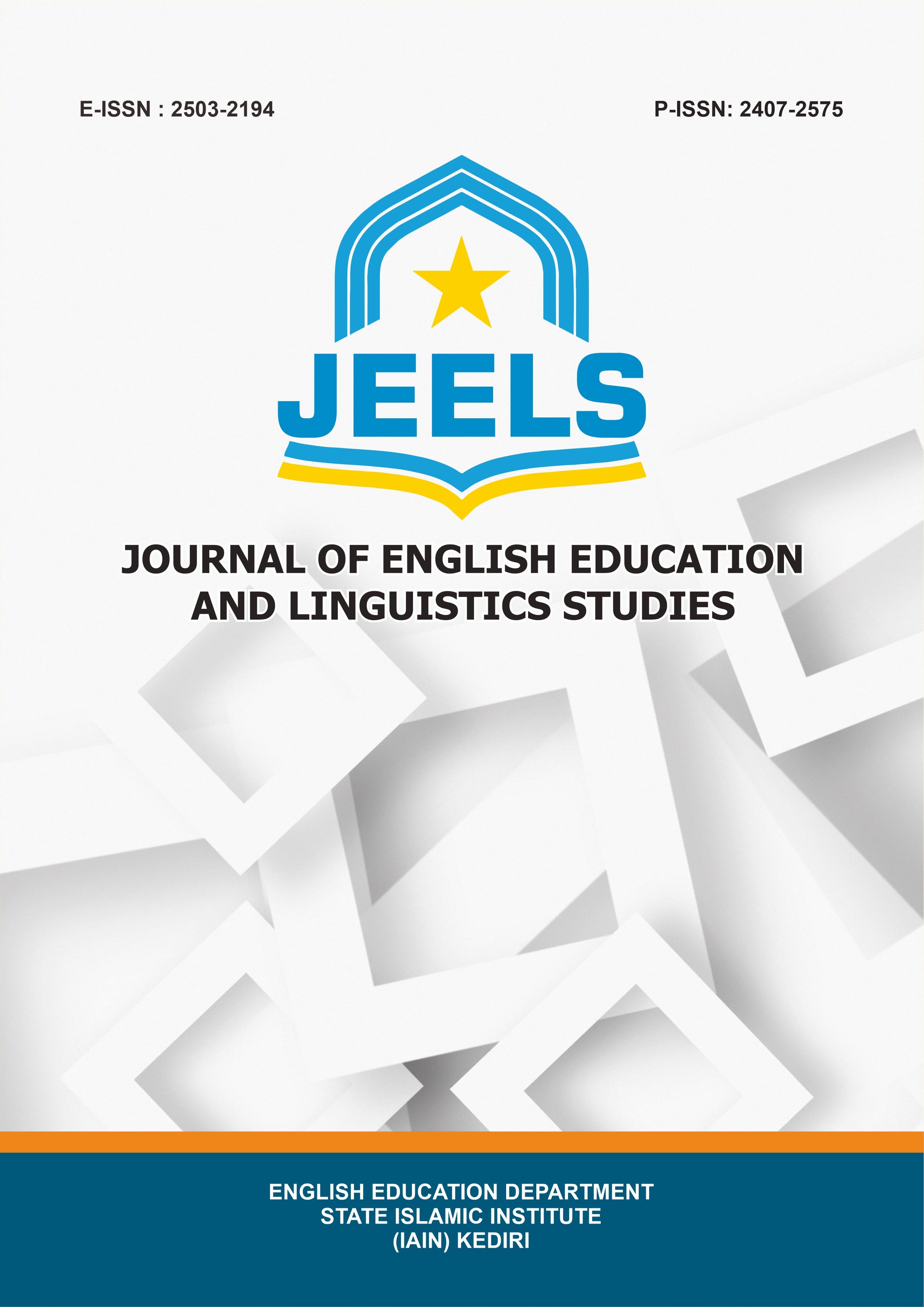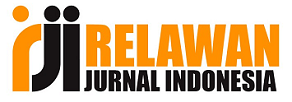An Android-Based Game for Improving Students’ English Literacy in Targeted School of Kampus Mengajar
DOI:
https://doi.org/10.30762/jeels.v12i1.3673Keywords:
gemoy, android-based game, English literacy, kampus mengajarAbstract
GEMOY (Gleaming English Game for Youth) is an Android-based educational game designed to enhance English literacy among students of Kampus Mengajar program in Trenggalek. This study aims to develop interactive and engaging activities through an Android-based to improve students' literacy levels. Fifty students at the eighth grade in two of junior high schools were equally divided into an experimental group and a control group. Three media validators and three material validators were involved in validating the game. Questionnaires and test were used to collect the data and analyzed using descriptive and Independent T-tests. The findings revealed that the media validation and material validation were valid and the score showed high improvement. The t-value was -51.187. It indicates that there was a significant difference. Based on the result, an important implication of implementing the game in Kampus Mengajar program demonstrates its potential to support educational initiatives and improve students’ literacy competence proven by the significant improvement of the process.
Downloads
References
Anthonysamy, L., Koo, A. C., & Hew, S. H. (2020). Self-regulated learning strategies in higher education: Fostering digital literacy for sustainable lifelong learning. Education and Information Technologies, 25(4), 2393–2414. DOI: https://doi.org/10.1007/s10639-020-10201-8
Alexiou, A., & Schippers, M. C. (2018). Digital game elements, user experience and learning: A conceptual framework. Education and Information Technologies, 23, 2545–2567. DOI: https://doi.org/10.1007/s10639-018-9730-6
Apriliawan, K. E., Yasa, I. N. S., Putra, I. P. A. A., Wulandari, K. N. M. S. P., Arini, K., & Werang, B. R. (2024). Challenges and Strategies in Improving Numeracy for Grade V Students at SDN 4 Selat, Singaraja. Formosa Journal of Multidisciplinary Research, 3(7), 2363–2378. https://doi.org/10.55927/fjmr.v3i7.9551
Biancarosa, G., & Griffiths, G. G. (2012). Technology tools to support reading in the digital age. The Future of Children, 139– 160.
Borg And Gall, M. D. (1989). Educational research and development is a process used to develop and validate educational product. New York: Longman.
Cahyono, M. F. A., Sari, H. P., & Sutanti, N. (2024). When Quizwhizzer Is Used Effectively At Sman 1 Blitar In The Tenth Grade To Enhance Students’reading Comprehension. JARES (Journal of Academic Research and Sciences), 9(2), 64–75. DOI: https://doi.org/10.35457/jares.v9i2.3485
David, L., & Weinstein, N. (2024). Using technology to make learning fun: technology use is best made fun and challenging to optimize intrinsic motivation and engagement. European Journal of Psychology of Education, 39(2), 1441–1463. DOI: https://doi.org/10.1007/s10212-023-00734-0
De Jongh, R. (2011). Google SketchUp for Game Design: Beginner’s Guide: Create 3D Game Worlds Complete with Textures, Levels, and Props. Packt Publishing Ltd.
Dehaene, S. (n.d.). Reading in the brain: The science and evolution of a human invention. 2009. New York: Viking.
Dvorak, J. D., & Buchanan, K. (2002). Using Technology To Create and Enhance Collaborative Learning.
Febriyanti, R., & Boediono, S. (2021). Implementasi Construct 2 dalam Pengembangan Game Edukatif sebagai Media Pembelajaran Pada Siswa Sekolah Dasar. Al-Khwarizmi: Jurnal Pendidikan Matematika Dan Ilmu Pengetahuan Alam, 9(2), 35–48.
Fithriani, R. (2018). Communicative game-based learning in EFL grammar class: Suggested activities and students’ perception. JEELS (Journal of English Education and Linguistics Studies), 5(2), 171-188. https://doi.org/10.30762/jeels.v5i2.509
Geng, S., Law, K. M. Y., & Niu, B. (2019). Investigating self-directed learning and technology readiness in blending learning environment. International Journal of Educational Technology in Higher Education, 16(17), 1–22. https://doi.org/10.1186/s41239-019-0147-0
Ghazy, A., Wajdi, M., Sada, C., & Ikhsanudin, I. (2021). The use of game-based learning in English class. Journal of Applied Studies in Language, 5(1), 67–78. https://dx.doi.org/10.31940/jasl.v5i1.2400
Godzicki, L., Godzicki, N., Krofel, M., & Michaels, R. (2013). Increasing Motivation and Engagement in Elementary and Middle School Students through Technology-Supported Learning Environments. Online Submission.
Hamdan, A., Din, R., Manaf, S. Z. A., Salleh, N. S. M., Kamsin, I. F., Ab Khalid, R., Ismail, N. M., Shah, P. M., & Karim, A. A. (2015). Personalized learning environment: integration of web technology 2.0 in achieving meaningful learning. Journal of Personalized Learning, 1(1), 13–26.
Kainulainen, S. (2024). Research and Development (R&D). In Encyclopedia of Quality of Life and Well-Being Research (pp. 5957–5959). Springer. https://doi.org/10.1007/978-3-031-17299-1_2482
Kleftodimos, A. (2024). Computer-Animated Videos in Education: A Comprehensive Review and Teacher Experiences from Animation Creation. Digital, 4(3), 613–647. https://doi.org/10.3390/digital4030031
Maulidyah, S. N., Sari, P., & Aini, R. (2022). Developing “SEEY” Android-Based Game for Learning English Grammar: Research and Development. EDUCATIO : Journal Of Education, 7(3), 386–395.
McNeil, S. H., & Stine, D. J. (2011). Interior Design Using Hand Sketching, SketchUp and Photoshop. SDC Publications.
Moussa, N. M., & Agarwal, S. (2024). Interpreting the Benefits and the Challenges of Utilizing Computer Animation Techniques in Higher Education. The International Journal of Design Education, 18(2), 57. DOI:10.18848/2325-128X/CGP/v18i02/57-72
Penfield, R. D., & Giacobbi, P. R. (2004). Applying a score confidence interval to Aiken’s item content-relevance index. Measurement in Physical Education and Exercise Science, 8(4), 213–225. https://doi.org/10.1207/s15327841mpee0804_3
Pratami, I. G. A. P. S., Nitiasih, P. K., & Budiarta, L. G. R. (2023). Development of Educational Games as Learning Media for English Learning for Primary Students. Language Circle: Journal of Language and Literature, 17(2), 317–324.
Procel, G. J. O., Medina, M. L. F., Sotomayor, D. J., & Sanchez, M. A. P. T. (2024). Using Technology in English Teaching. Journal of Environmental Research and Public Health, 17(9), 9.
Primasari, Y. (2020). Effectiveness Of The Adventure Of Timun Emas Game In Improving The Reading Score Of Informatics Engineering Students. JOSAR (Journal of Students Academic Research), 5(2), 75–82. https://doi.org/10.35457/josar.v5i2.1156
Primasari, Y., Lestanti, S., & Dhenabayu, R. (2019). Effectiveness of Reading for Islamic Education: Design of Multi-Platform Educational Game as Instructional Media. Al-Hayat: Journal of Islamic Education, 3(2), 140–148. https://doi.org/10.35723/ajie.v3i2.77
Puspitasari, H., Maharani, R. F., Setyawan, W. H., & Primasari, Y. (2022). Android-Based Mobile Application for Vocabulary Learning. Jurnal Pendidikan Dan Pengajaran, 55(3). https://doi.org/10.23887/jpp.v55i3.40661
Santoso, B. H. (2011). Game-Based Learning (GBL).
Sari, H. P., & Hestiningrum, Y. S. P. (2019). Pengembangan Snake and Ladder Game Sebagai Media Pembelajaran Pada Mata Kuliah Vocabulary Semester III Universitas Islam Balitar. Konstruktivisme: Jurnal Pendidikan Dan Pembelajaran, 11(2), 163– 175. https://ejournal.unisbablitar.ac.id/index.php/konstruktivism e/article/view/724 https://doi.org/10.35457/konstruk.v11i2.724
Sari, H. P., Sutanti, N., & Wahyuningsih, L. T. (2018). Developing Flashcard Media For Teaching Vocabulary To The Seventh Grade Students Of Junior High School (Study Case in the seventh grade students at SMPN 2Sanankulon). Konstruktivisme: Jurnal Pendidikan & Pembelajaran, 10(2), 178–192. https://doi.org/10.30957/konstruk.v10i2.512
Sari, A. I., Suryani, N., Rochsantiningsih, D., & Suharno, S. (2019). The development of Android-based smartphone learning application on teaching reading comprehension. AIP Conference Proceedings, 2194(1). https://doi.org/10.1063/1.5139844
Snow, C. E. (2010). Academic language and the challenge of reading for learning about science. Science, 328(5977), 450–452. https://doi.org/10.1126/science.1182597
Sudadi, S., Hasbullah, A., Masduki, Y., Istiqomah, N., & Pranajaya,
S. A. (2024). Application of the Online Collaborative Learning Platform in Islamic Religious Education Learning: Its Impact on Academic Achievement and Student Learning Motivation. Journal Neosantara Hybrid Learning, 2(1), 302–317.
Turkay, S., & Adinolf, S. (2015). The effects of customization on motivation in an extended study with a massively multiplayer online roleplaying game. Cyberpsychology: Journal of Psychosocial Research on Cyberspace, 9(3). https://doi.org/10.5817/CP2015-3-2
Downloads
Published
How to Cite
Issue
Section
License
Copyright (c) 2024 JEELS (Journal of English Education and Linguistics Studies)

This work is licensed under a Creative Commons Attribution 4.0 International License.










